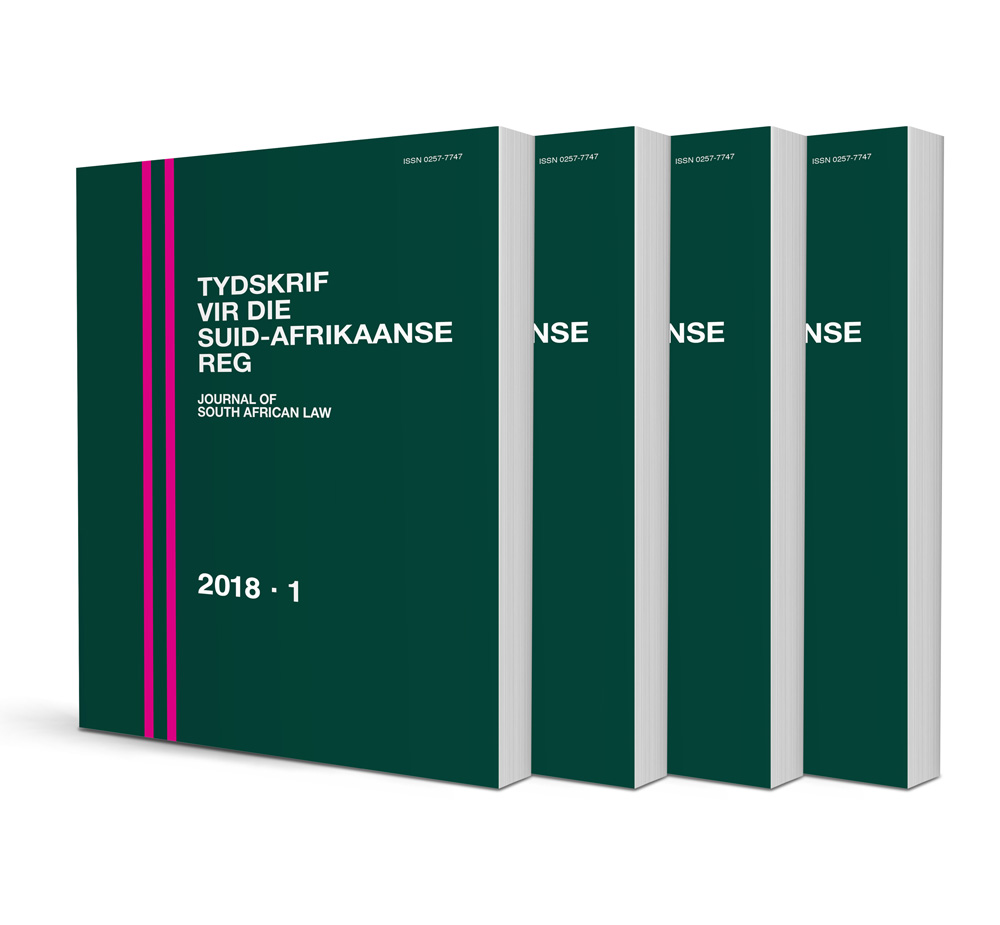
Die soepelheid van die eiendomsbegrip in die trustreg
Authors MJ De Waal
ISSN: 1996-2207
Affiliations: Affiliated with the University of Stellenbosch
Source: Tydskrif vir die Suid-Afrikaanse Reg, Issue 1, 2019, p. 25 – 40
Abstract
THE FLEXIBILITY OF THE OWNERSHIP CONCEPT IN THE LAW OF TRUSTS The trust as an institution that has developed in the common law and in some of the mixed legal systems (such as South Africa, Scotland and Quebec) is characterised by its pervasiveness in a wide range of personal and commercial contexts. This means that the trust in its true form can be employed in a wide range of contexts and for a variety of purposes, thus displaying what has been described as its "chameleon-like" quality. This contrasts with the trust in its "diluted" form (as frequently encountered in Continental Europe), which features some trust-like properties, but lacks the flexibility typically associated with the common-law trust as described above. It is argued that the flexibility of the trust in its true form is facilitated by, among others, the flexibility of the ownership concept in the law of trusts. In relation to the South African trust model, this phenomenon is illustrated in at least three specific areas of trust law. The first concerns the basic principle that, in civilian or mixed legal systems, the trust is not based on split ownership between the trustee and the trust beneficiary, but on the notion that the trustee owns assets in two separate estates (or patrimonies), that is, the trust estate and the trustee’s personal estate. Ownership in these two estates is treated in a remarkably flexible fashion — thus, for example, it enables the courts to craft new remedies in instances of so-called trust abuse. The second area concerns the very basic question as to where ownership must be vested in a trust. Here, South African law recognises a very peculiar trust type — the so-called bewind trust — under which ownership is vested not in the trustee, but in the trust beneficiary. This shift of ownership towards the trust beneficiary contributes to the flexibility of the trust institution and facilitates the use of trusts in new areas. The third area deals with the type of joint ownership that exists among co-trustees in a trust where there is more than one trustee (which is normally the case). In South Africa, the traditional forms of co-ownership do not explain the automatic transfer of ownership to co-trustees in the event of, for example, the death of one of the co-trustees. Research has shown that South African law has in this context probably accommodated the English law concept of joint tenancy, with its corollary of the rule of survivorship. This would explain what happens among co-trustees in the circumstances described and it once again illustrates the ability of the trust system to depart from established norms as far as the ownership concept is concerned. It nevertheless remains a challenge to explain the flexibility of the ownership concept in the law of trusts. In South Africa, this is sometimes done by attaching certain labels to the trustee’s ownership, such as "bare ownership", "ex officio ownership" or even "legal ownership". Other attempts have focused on the concept of "fiduciary ownership", unpacking it in the context of trusts. However, an extremely useful insight has been that provided by those authors who have argued that the common law has been able to accommodate the trust in its "true" form because of its "anti-conceptual" approach to property or, put differently, "its power to break fundamental rules of the legal system within which it operates". It is argued that South African law has shown the capacity to do exactly this with regard to its treatment of ownership in the law of trusts. This capacity has probably been facilitated by the fact that the English common-law trust was initially received into South African law, but later transformed in a pragmatic (and typically common-law) case-by-case fashion to align itself with well-known civilian institutions already recognised in the system.